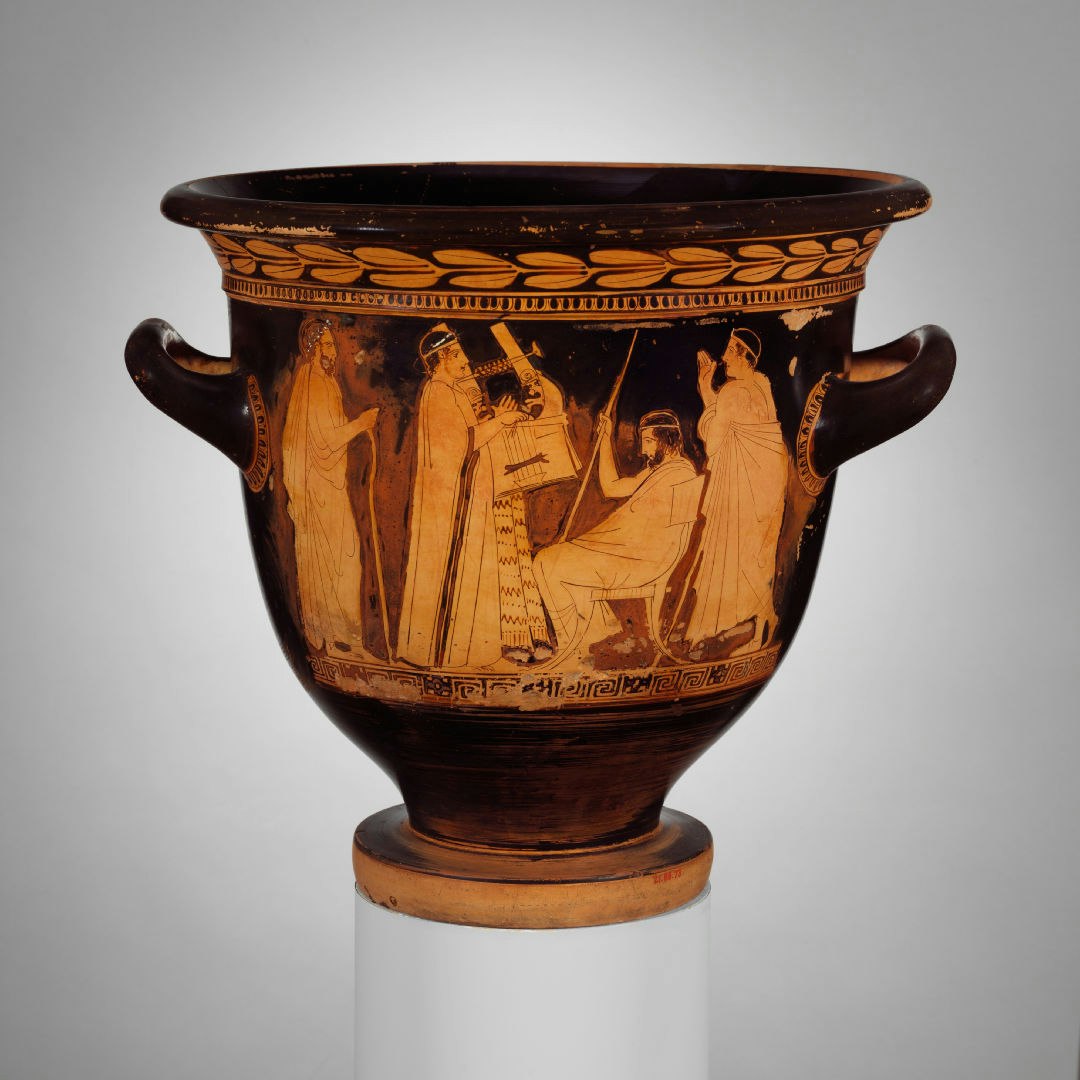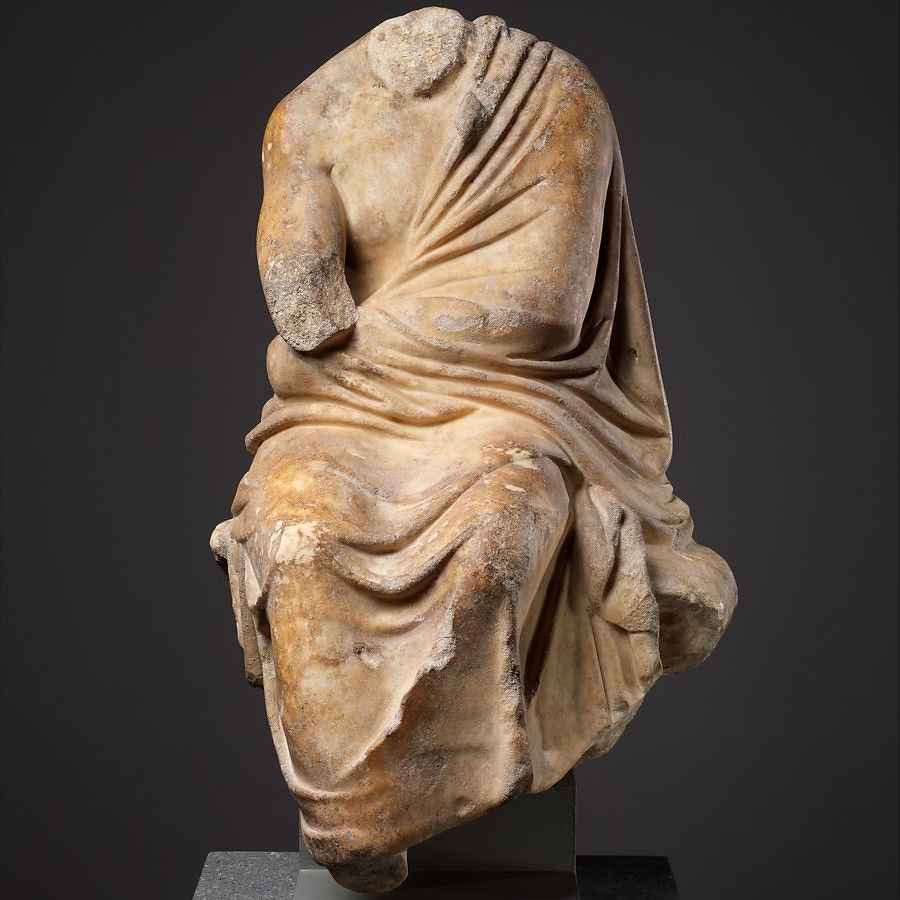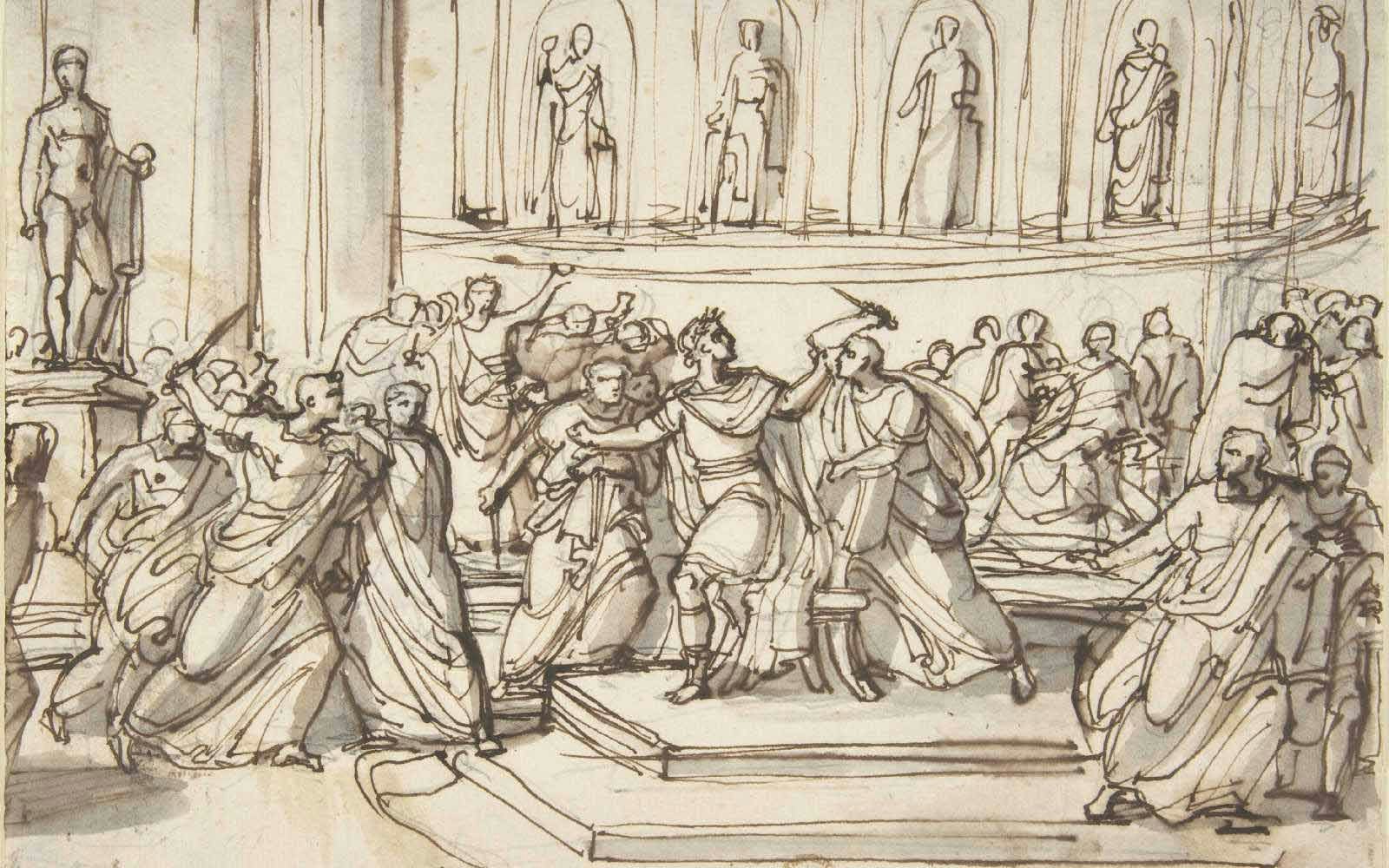When you think about ancient Greece, certain images probably come to mind: columned temples dedicated to various members of the Greek pantheon, brilliantly colored mosaics depicting religious stories, and old philosophers clad in white togas. While you might indeed see the first two were you to travel to ancient Greece, you probably wouldn’t see anyone in a toga because togas are not Greek—not directly at least.

An ancient Greek mixing bowl featuring several men wearing enkykla. Photo Credit: The Metropolitan Museum of Art
Some Greeks wore garments known as chitons, sleeveless tunics that were draped over the shoulders, around the body, and cinched with a belt. Depending on the time period and who was wearing the chiton, the hem might fall to the ankles or lie above the knee. Women would sometimes wear an enkyklon over the top half of their chiton. Enkykla were made of a long, rectangular piece of woven cloth (probably wool) that was carefully draped around the body. Pins and ties would then be used to hold the enkyklon in place. Many men chose to wear a long, full-body enkyklon instead of chiton. The Romans eventually took inspiration from this latter fashion statement and made it their own, calling this new garment the toga.
“Now wait a minute,” you might say. “How is the enkyklon different from a toga?” After all, a flat bedsheet is the fabric of choice for many attending toga parties in movies. The primary difference between togas and enkykla lies in the shape. While enkykla were rectangular, togas were semicircular, which is what gave them the wonderful drape and folds you can see on the stone versions worn by ancient statues.

A marble statuette from Rome depicting an unknown philosopher wearing a toga. Photo Credit: The Metropolitan Museum of Art
Togas were also considerably more important in Roman society than enkykla were in Greek culture. Togas varied greatly depending on your status in society and, after the second century, were reserved for men (women wore a similar garment called a stola). Most adult men wore toga virilism, a simple, undyed wool garment. Upper class prepubescent boys might wear a toga praetexta, a toga with a red-purple border. For Romans in mourning, the toga pulla, a dark-colored toga, was the garment of choice. Toga candida, togas bleached until they were bright white, were reserved for those campaigning for political office.
There were fancier togas as well. The generals and Roman emperors often wore elaborately embroidered toga picta. The emperor’s toga picta might also be dyed Tyrian purple, a rare and expensive dye made from murex shellfish. Religious leaders and other important officials might wear toga trabea, which had red stripes and a purple or saffron border.
All male citizens were required to wear togas at public ceremonies, and while it wasn’t required in everyday life, going about in an alternative garment was considered disrespectful. At first, this wasn’t a problem as the original togas were easy-to-wear cloaks, but, as we often see in fashion, togas grew more complicated over time. What started as a small oval fabric easily draped around the body grew to a semicircle 18 feet by 11 feet. Imagine draping that much wool around your body without the aid of servants and then having to wear that outfit in the heat of summer. Togas also had to be positioned just so to be truly fashionable, which led the Roman writer Tertullian to say of the toga, “It is not a garment, but a burden.” Eventually the toga was discarded by the Romans for all but ceremonial purposes in favor of the much easier-to-wear tunica. I can’t say I blame them.
Now the question remains: why are togas associated with the ancient Greeks? I’m not entirely certain. One source I saw surmised that people often group the ancient Greeks with the ancient Romans, thanks to their shared pantheon. Add that to the fact that enkykla and togas look somewhat similar, and it would be simple for laypeople to conflate the two. I have a feeling that’s probably part of the reason, and I’m sure early Hollywood epics (which were rarely known for their historical accuracy) probably fueled this fire.
Either way, togas are truly fascinating garments with an interesting history, even if they aren’t Greek.
—Christina

